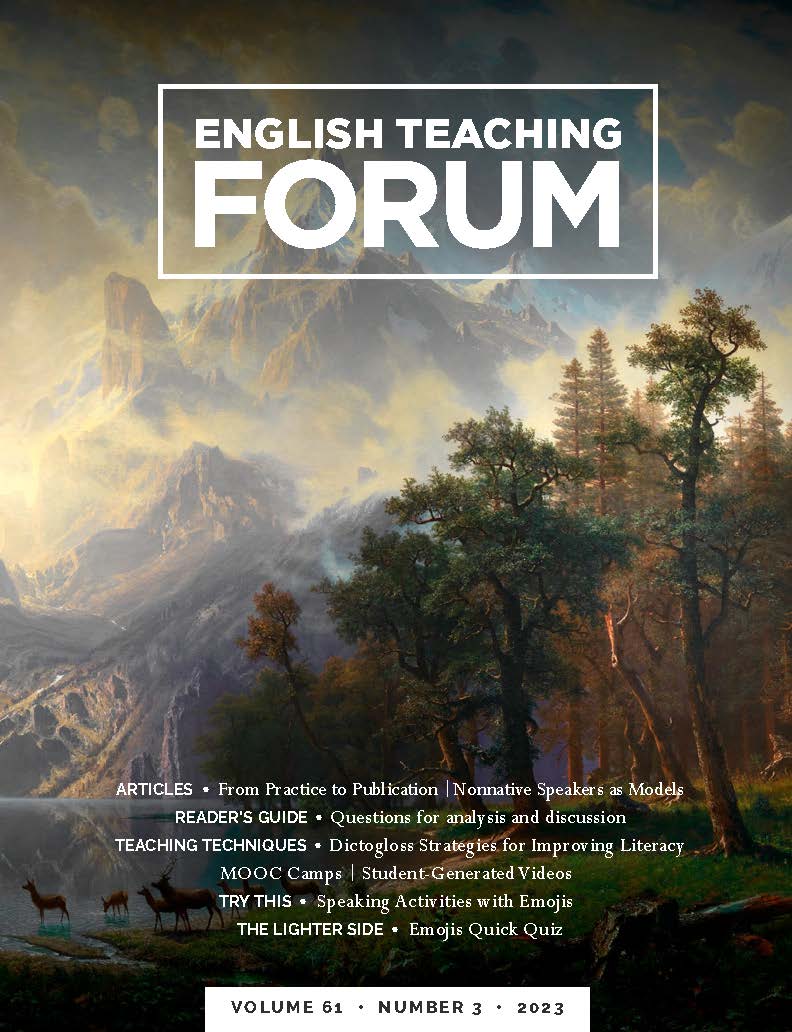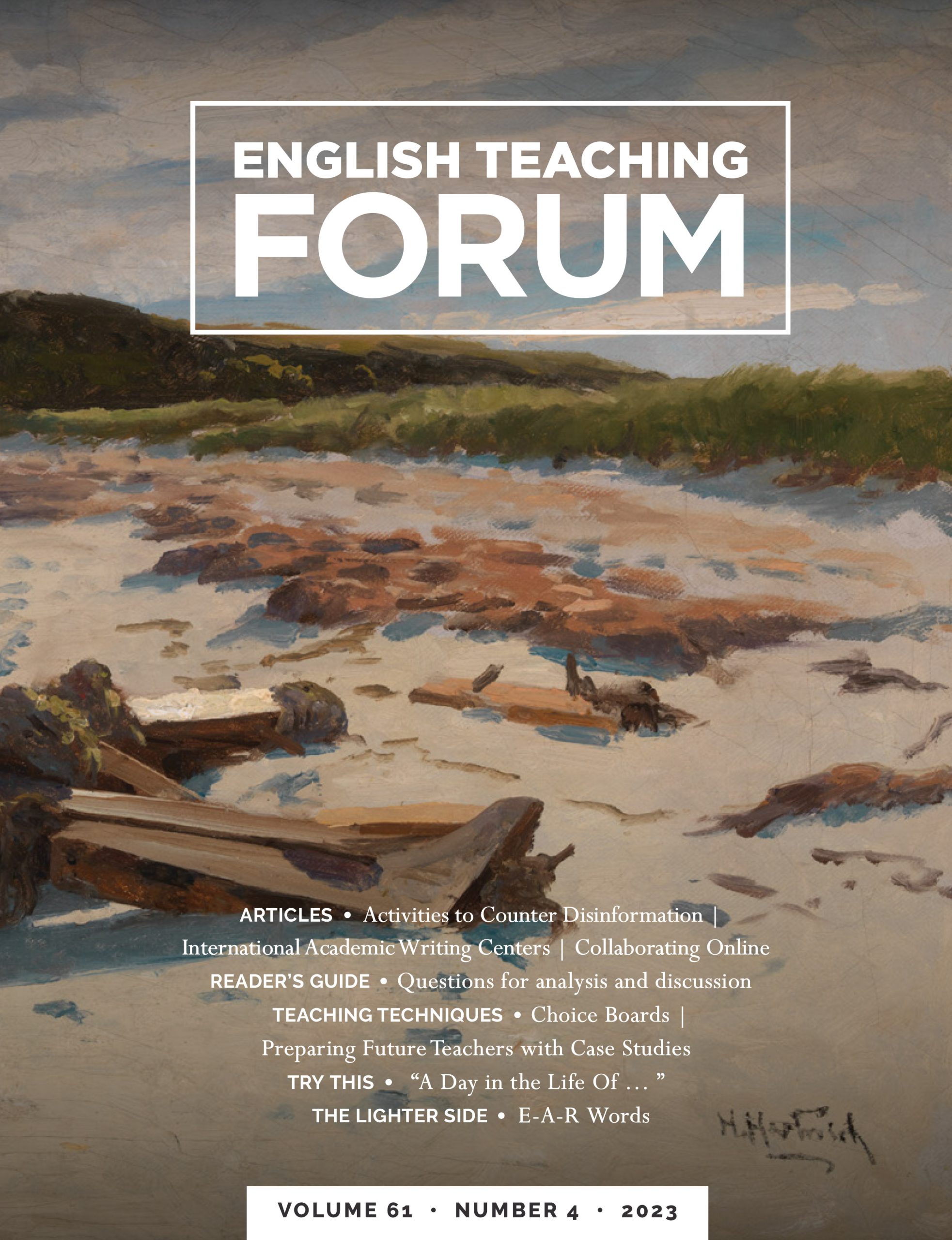Now Reading: English Teaching Forum 2023, Volume 61, Number 3
-
01
English Teaching Forum 2023, Volume 61, Number 3
English Teaching Forum 2023, Volume 61, Number 3

TABLE OF CONTENTS..
From Practice to Publication: Two Case Studies of ESOL Teachers
As the title suggests, this article shows how the authors took teaching-related ideas and developed them – through the steps of drafting, review, and revising – into published articles. Using examples of the steps involved, the authors explore options for how others in the field of English teaching might productively write for publication as well. “The writing process,” the authors argue, is “an extension of what good teachers already do.”
From Practice to Publication: Two Case Studies of ESOL Teachers (PDF)
Enhancing English-Using Self-Images with Nonnatives as Models
This article, by Tomoyuki Kawashima, presents two listening activities, using nonnative speakers as models, that “broaden … students’ perspectives on English and enhance their self-perception as future English users.” The activities help students understand that everyone, even native speakers, has an accent, and that sounding “different” is usual. As such, “we should not label unfamiliar accents as strange or inferior.”
Enhancing English-Using Self-Images with Nonnatives as Models (PDF)
Reader’s Guide
This guide is designed to enrich your reading of the articles in this issue. You may choose to read them on your own, taking notes or jotting down answers to the discussion questions below. Or you may use the guide to explore the articles with colleagues.
Reader’s Guide (PDF)
Beyond Grammar Teaching: Dictogloss Strategies for Improving Literacy
Author Aida McLeod presents a variation on Ruth Wajnryb’s original dictogloss technique; the strategy described here is designed “not so much in pursuit of grammar-improvement goals, but rather …. to guide student written text composition.” Specific examples show how the technique incorporates both autonomous work and collaboration and that it can be used to achieve a secondary goal of enhancing students’ critical thinking about media texts.
Beyond Grammar Teaching: Dictogloss Strategies for Improving Literacy (PDF)
Using MOOC Camps to Teach English
Massive Open Online Courses (MOOCs) are becoming more popular and offer students and teachers alike opportunities to learn new skills. Many MOOCs are free and target English language learners. Author Claire Lee gives practical suggestions for conducting “MOOC camps” that can help your students get the most out of the MOOCs they enroll in.
Using MOOC Camps to Teach English (PDF)
Student-Generated Videos: Bringing ESP and General English Course Content to Life
The author, Enock Mbenza, presents “a practical technique in which students implement ESP course materials in meaningful real-life contexts by recording videos of themselves in specific settings.” The author has used this technique with nursing students in the Democratic Republic of the Congo and shows how the technique can be used with students in other courses and contexts.
Student-Generated Videos: Bringing ESP and General English Course Content to Life (PDF)
Seven Speaking Activities with Emojis
As emojis become more and more common in texts and other types of communication, this article presents seven fun, easy-to-prepare activities, based on emojis, that give your students authentic, meaningful speaking practice.
Seven Speaking Activities with Emojis (PDF)
The Lighter Side: Emojis Quick Quiz
Take this informal quiz to match written statements with the “meanings” represented by the given emojis. We hope you it enjoy it!
The Lighter Side: Emojis Quick Quiz (PDF)






